Chapter 25- Urinary System- Label, Match, T/F, Fill in
1/51
There's no tags or description
Looks like no tags are added yet.
Name | Mastery | Learn | Test | Matching | Spaced |
|---|
No study sessions yet.
52 Terms
Glomerulus
C
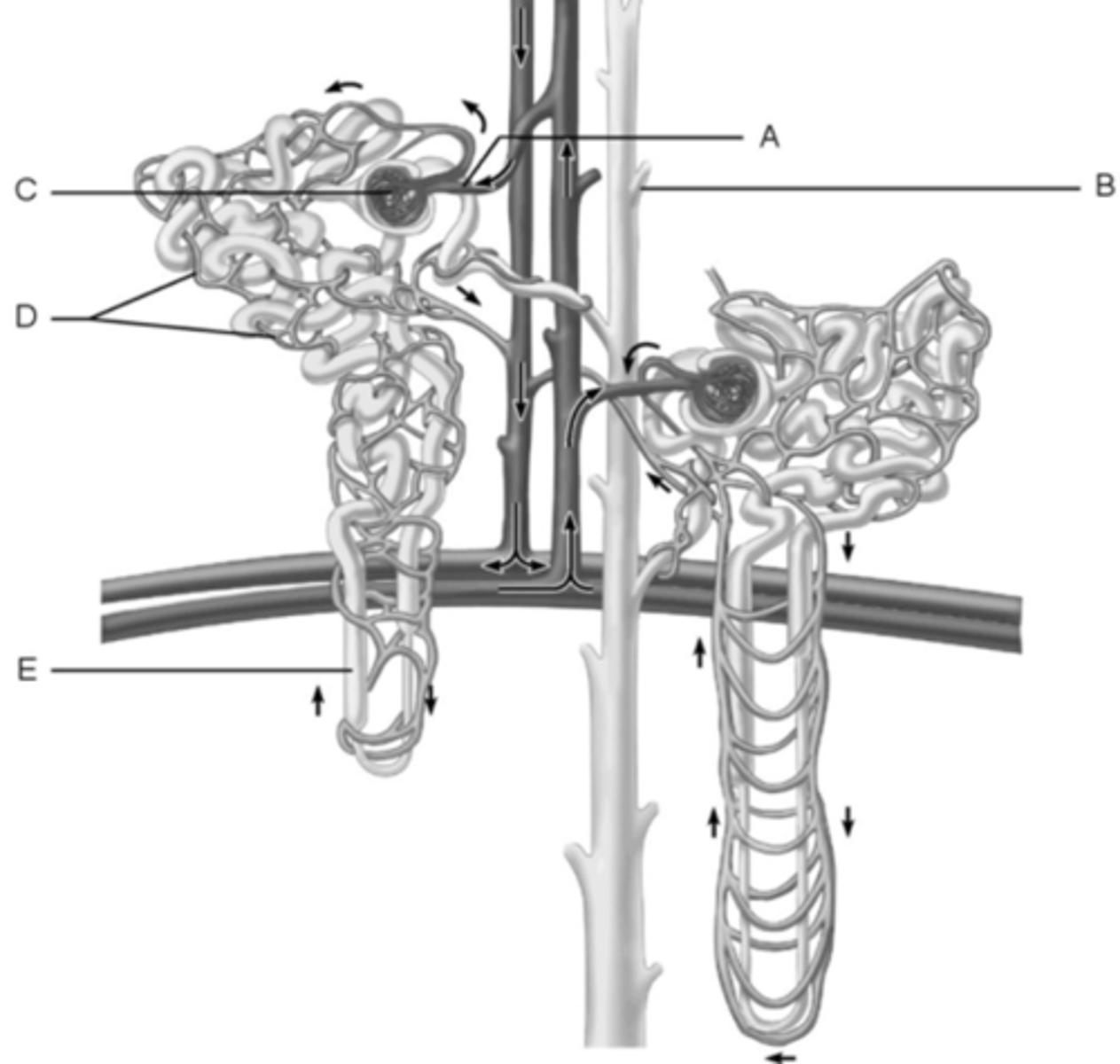
Afferent arteriole
A
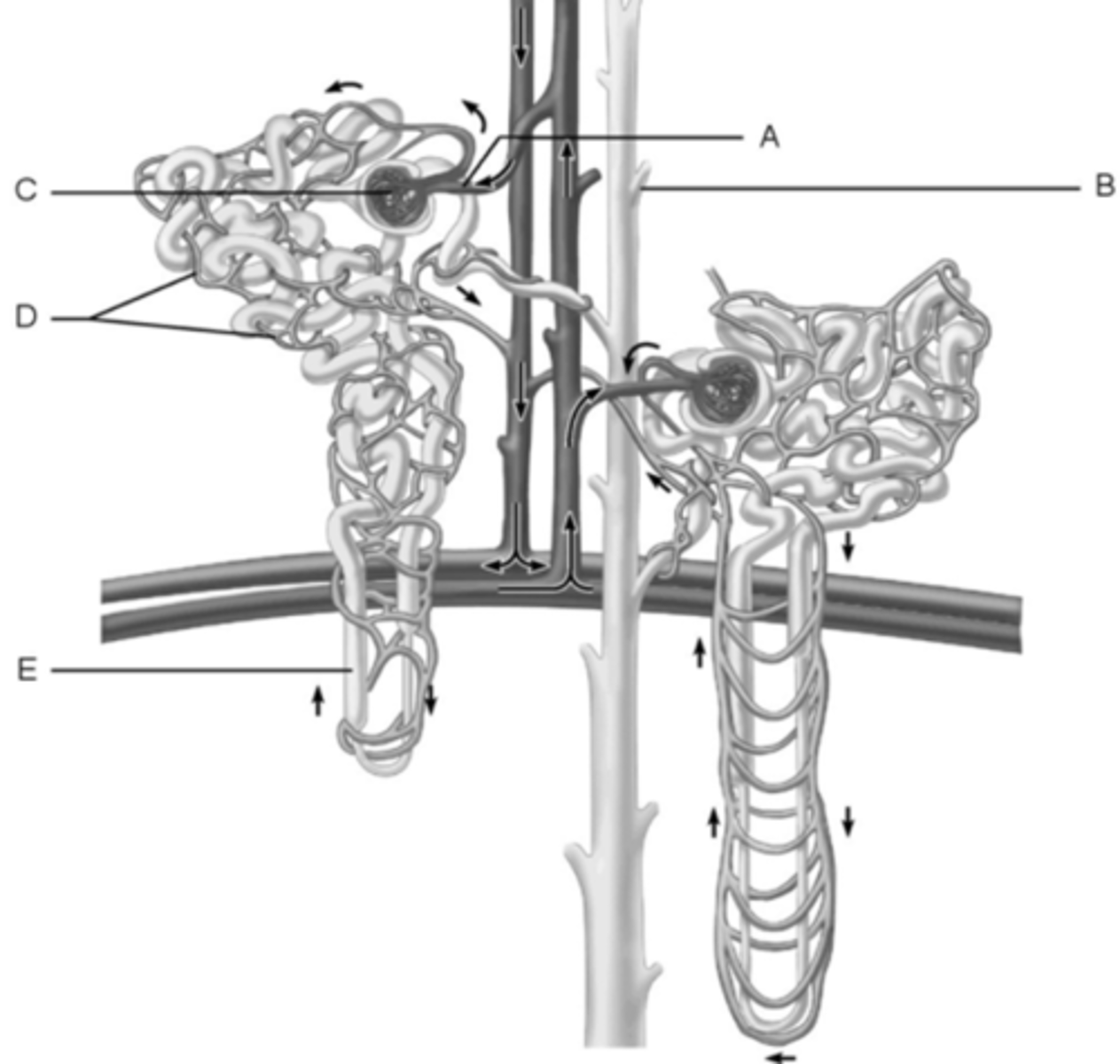
Collecting duct
B
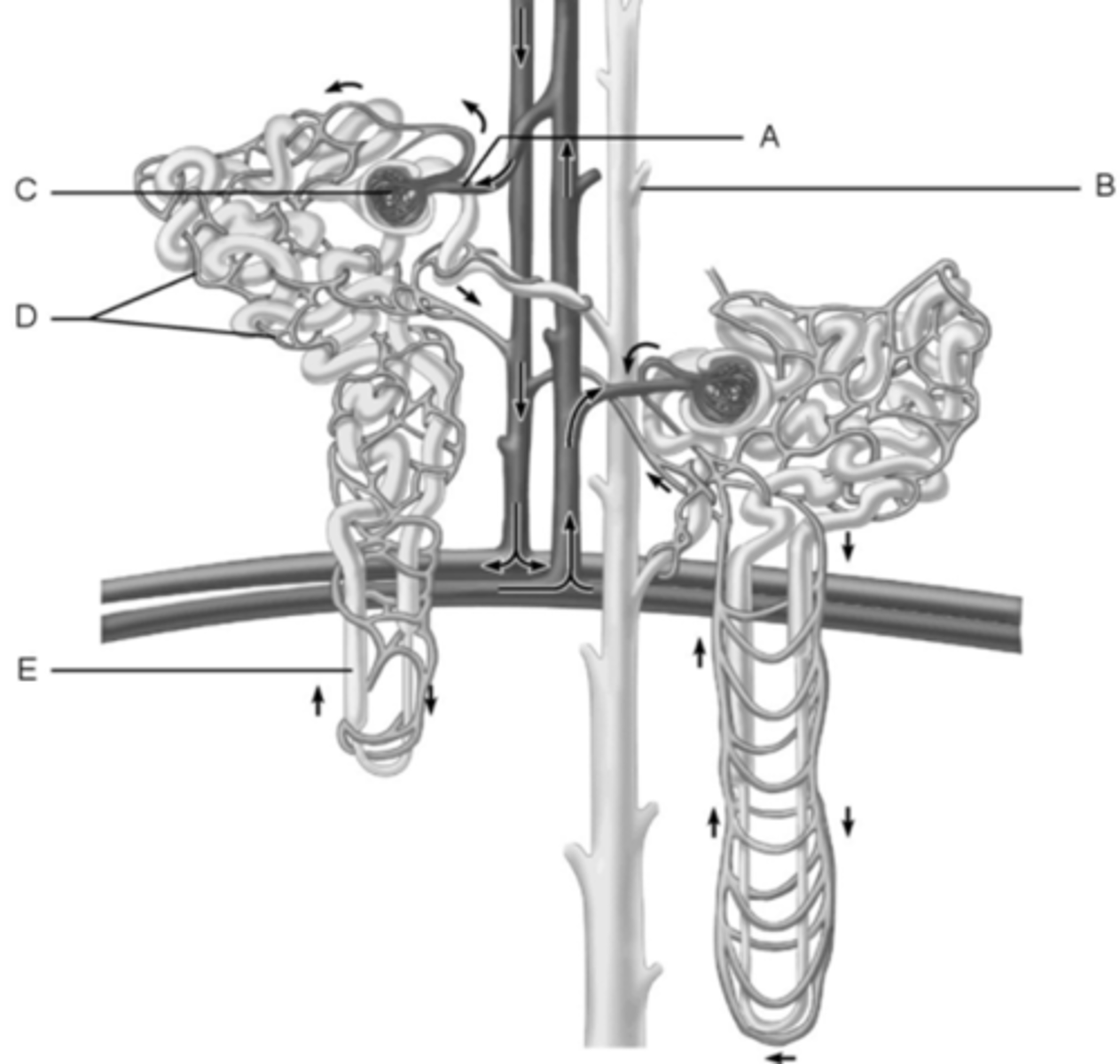
Nephron Loop
E
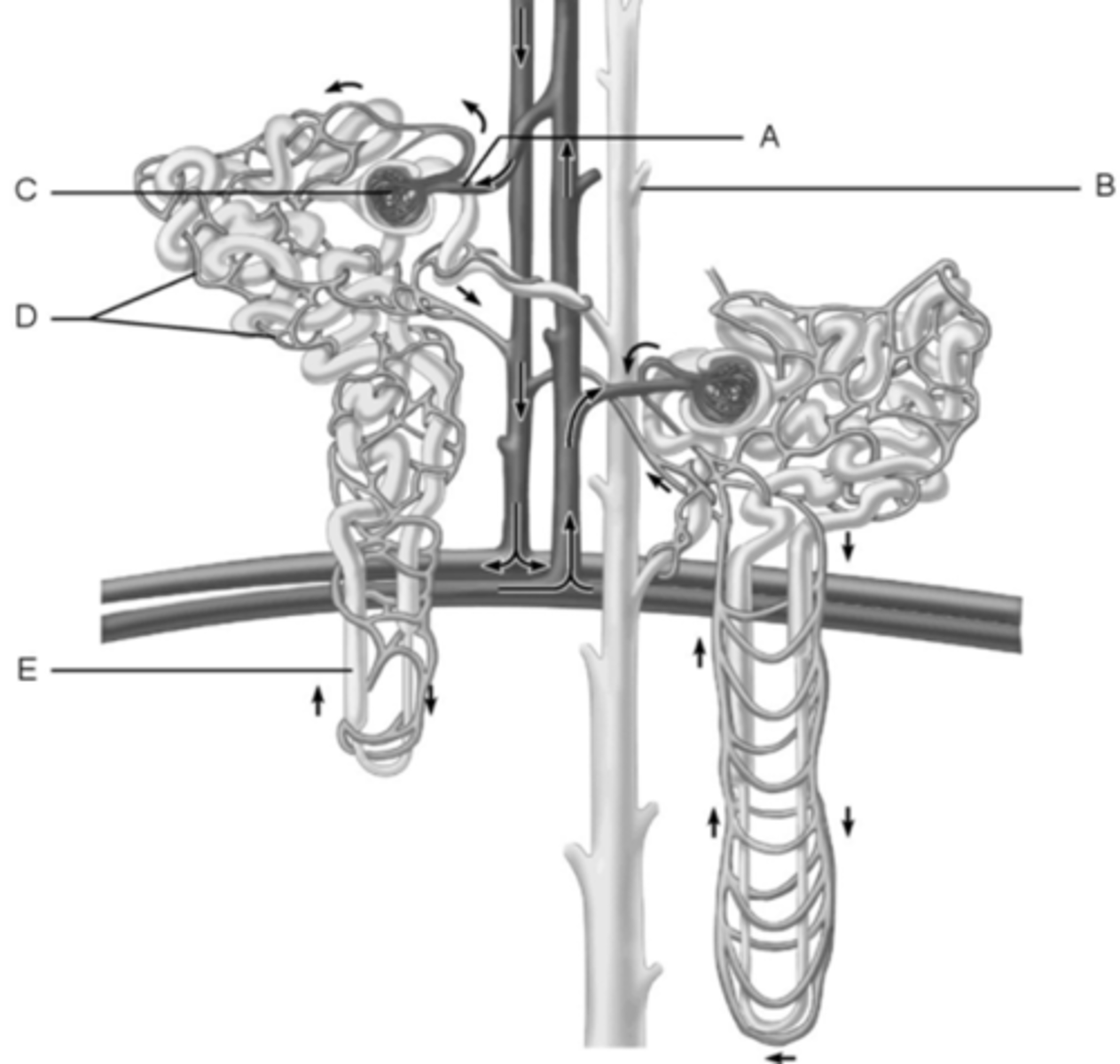
Peritubular capillaries
D
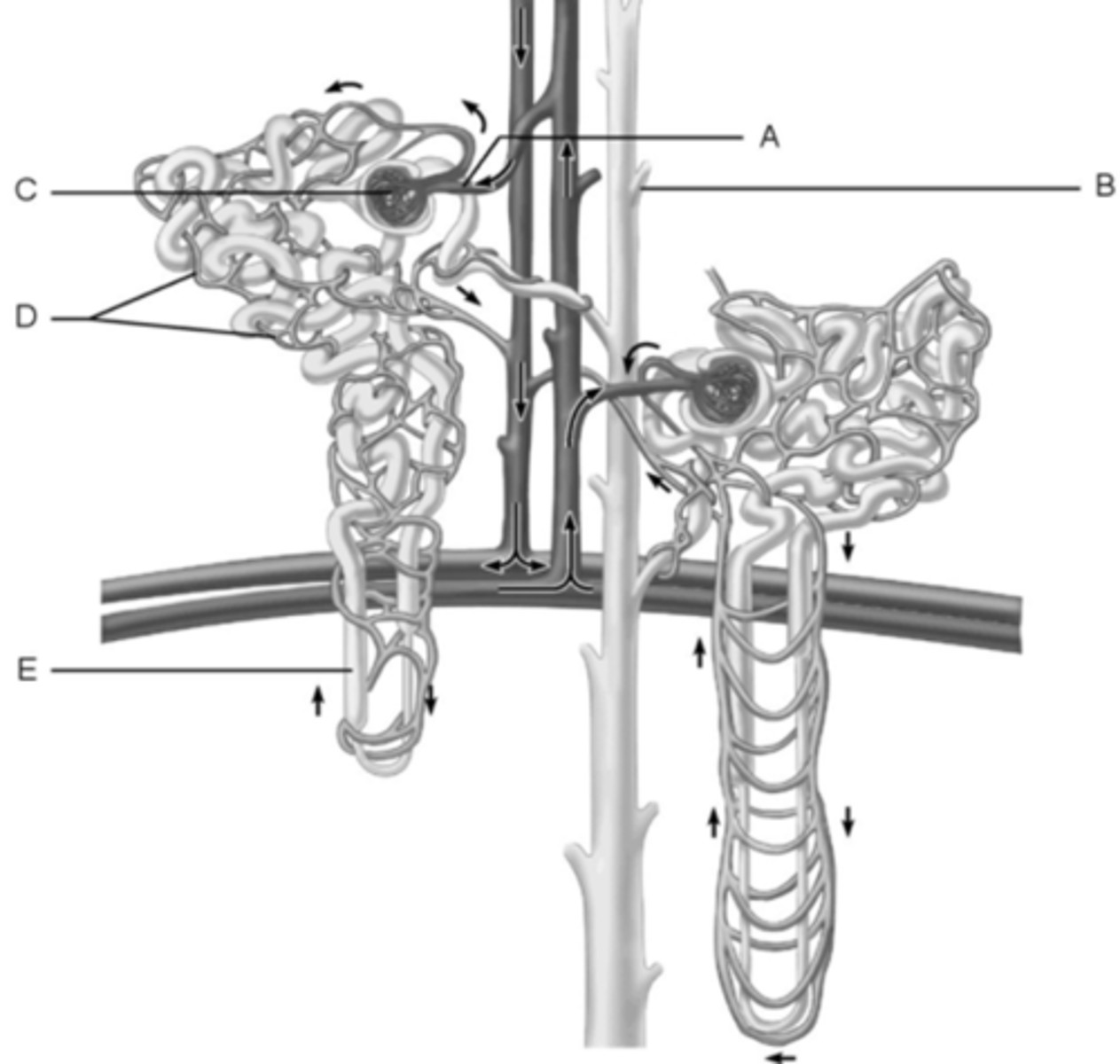
Medulla of the kidney
E
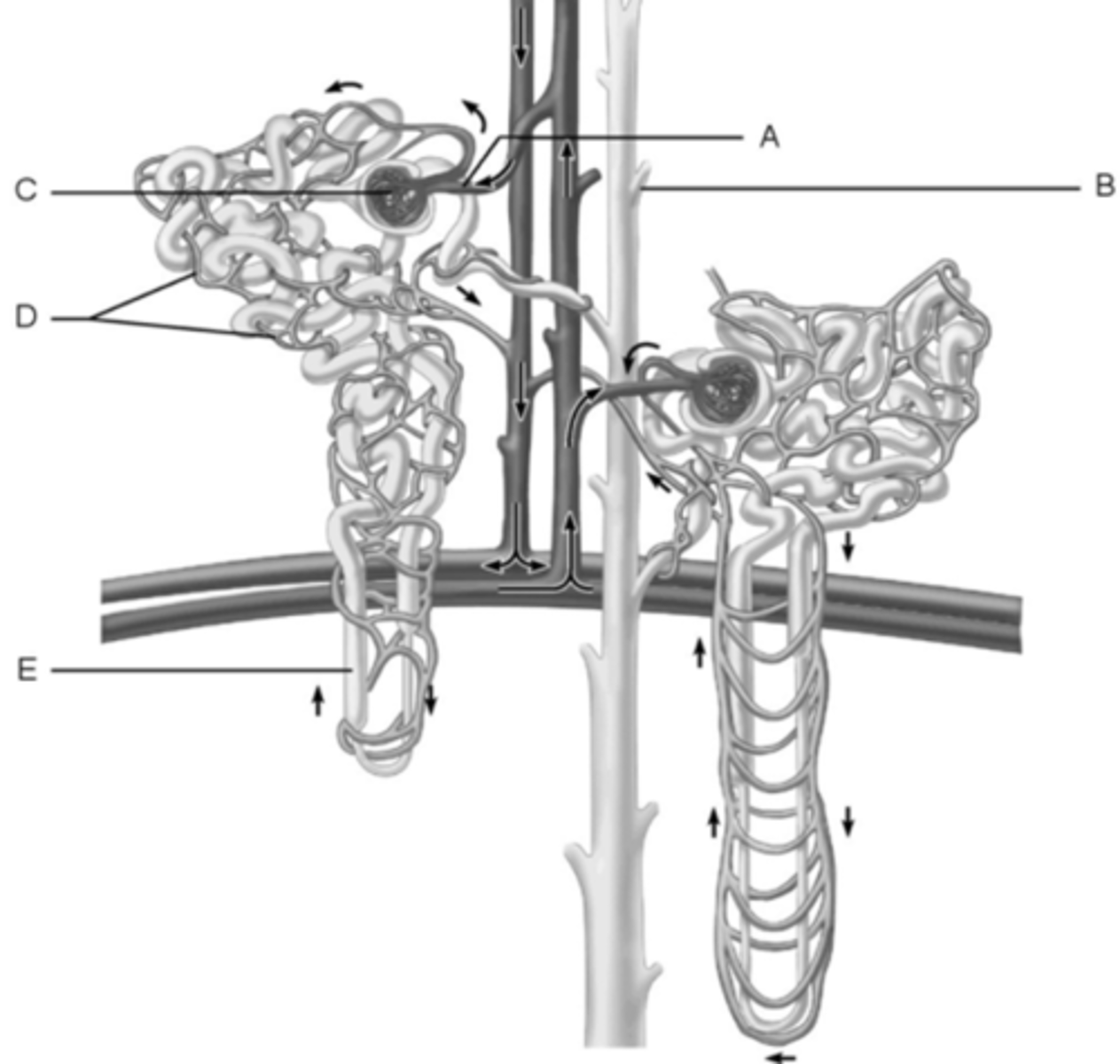
A
Which structure is most closely associated with granular cells?
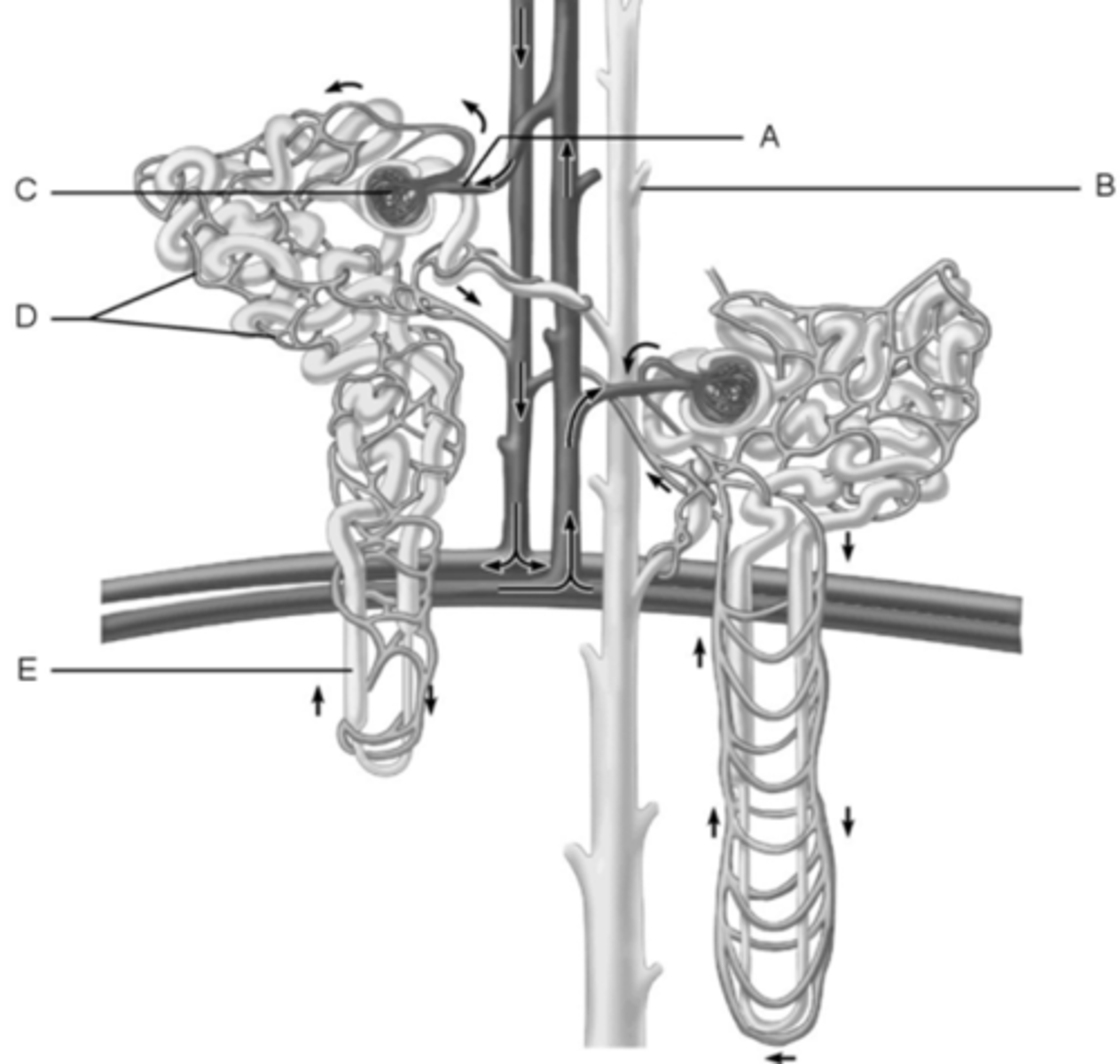
A
Which structure is composed of simple squamous epithelium?
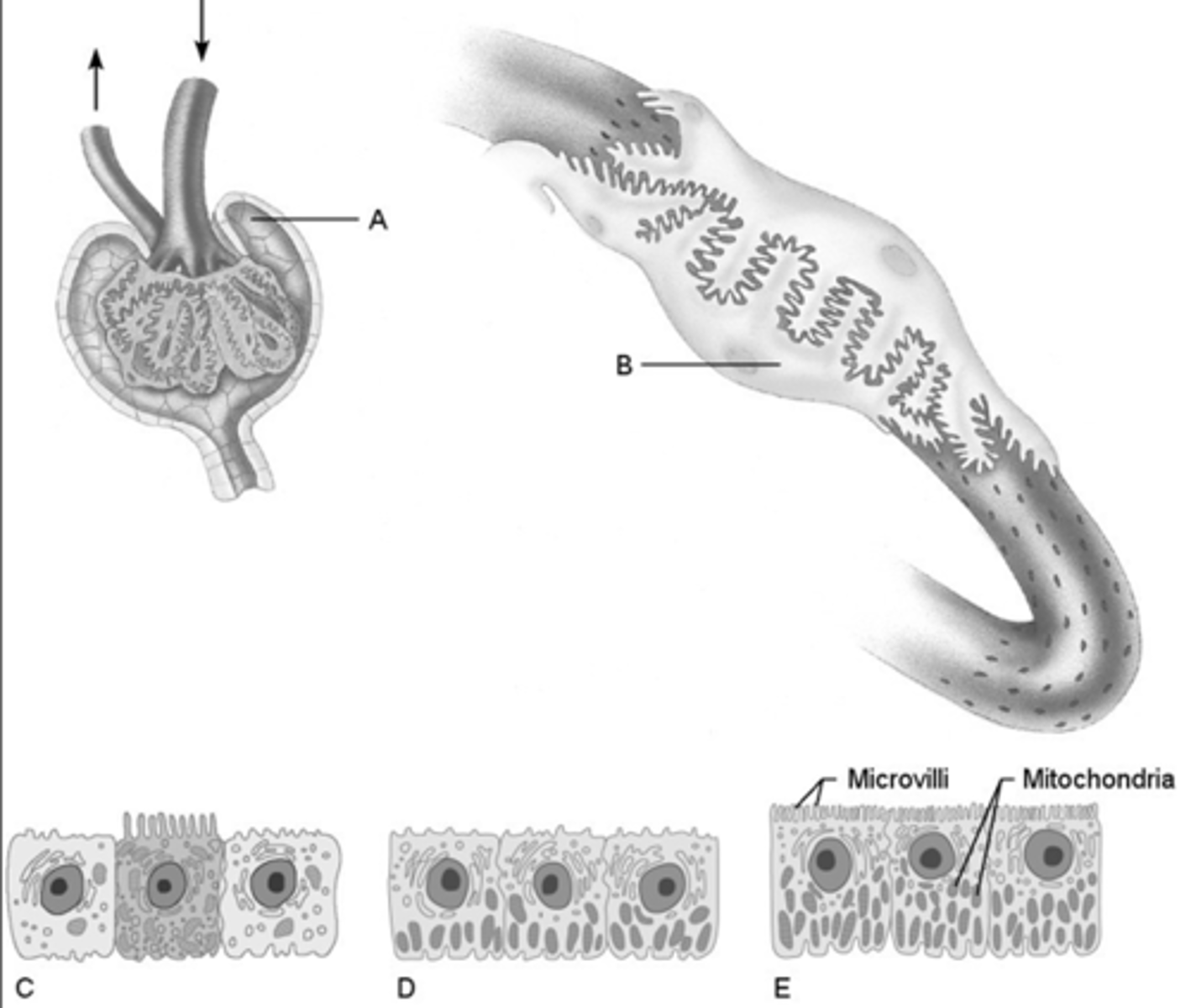
Collecting duct cells
C

Distal convoluted tubule cells
D
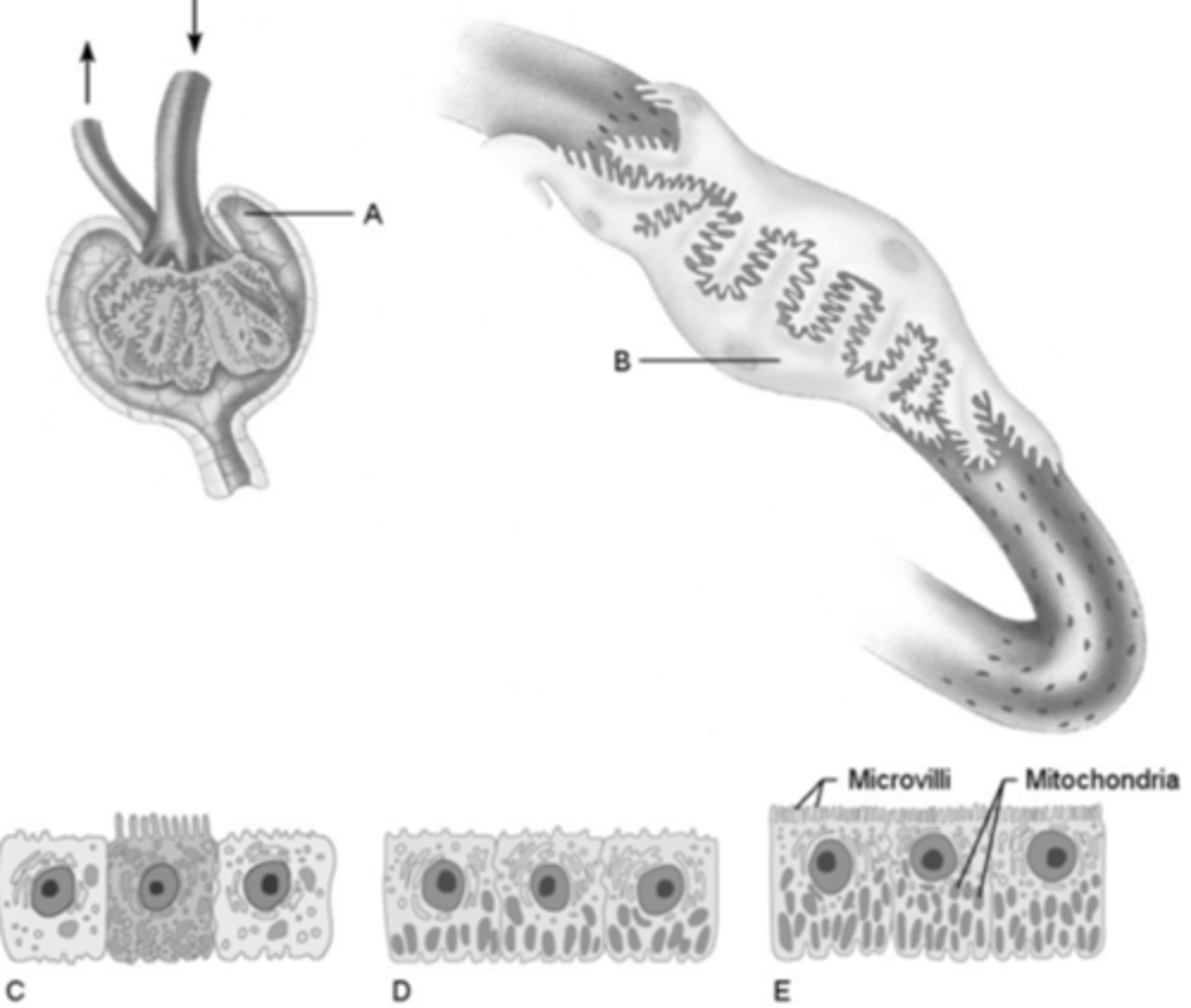
E
Which structure has cells that are the most active in reabsorbing the filtrate?
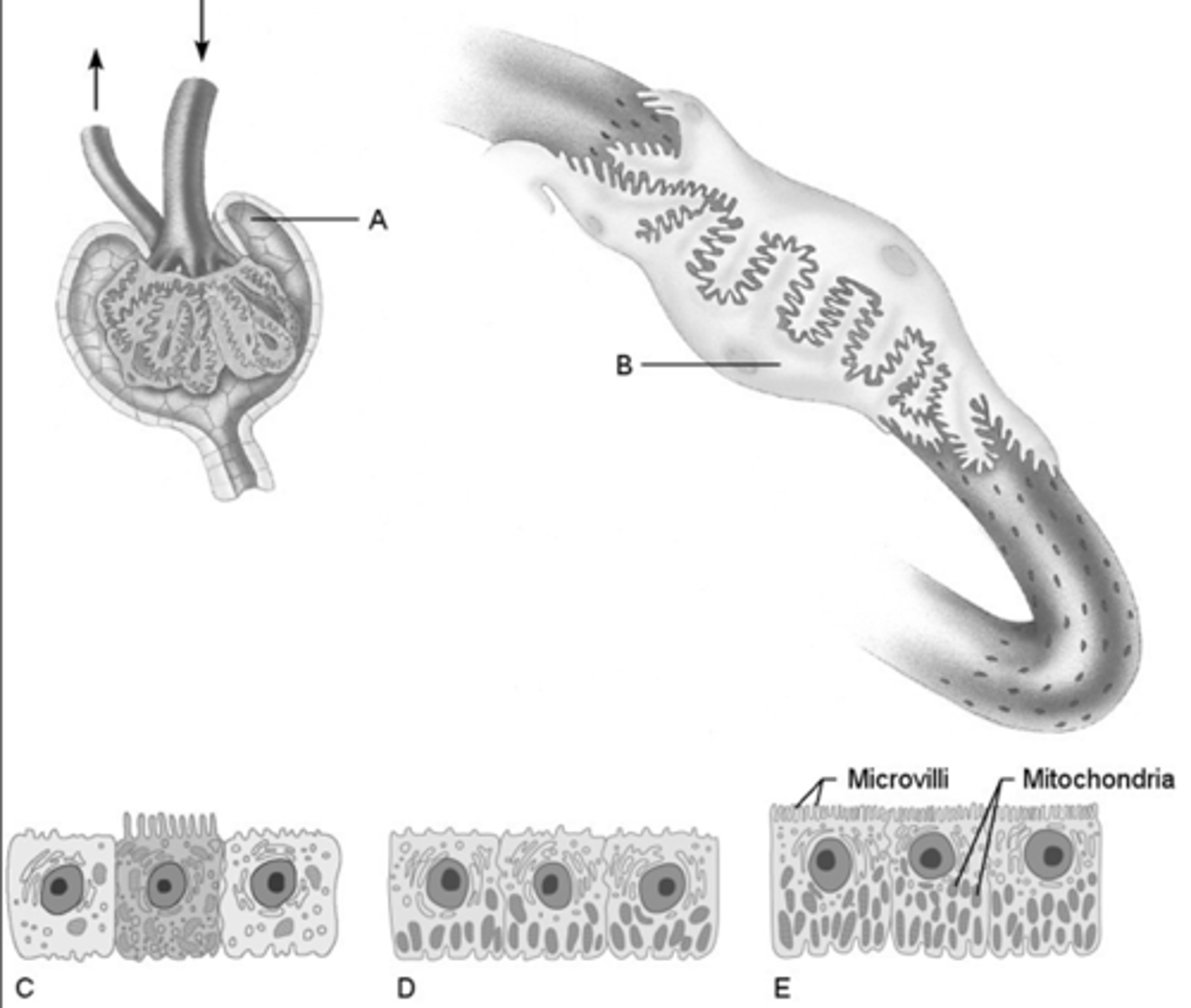
Podocyte
B
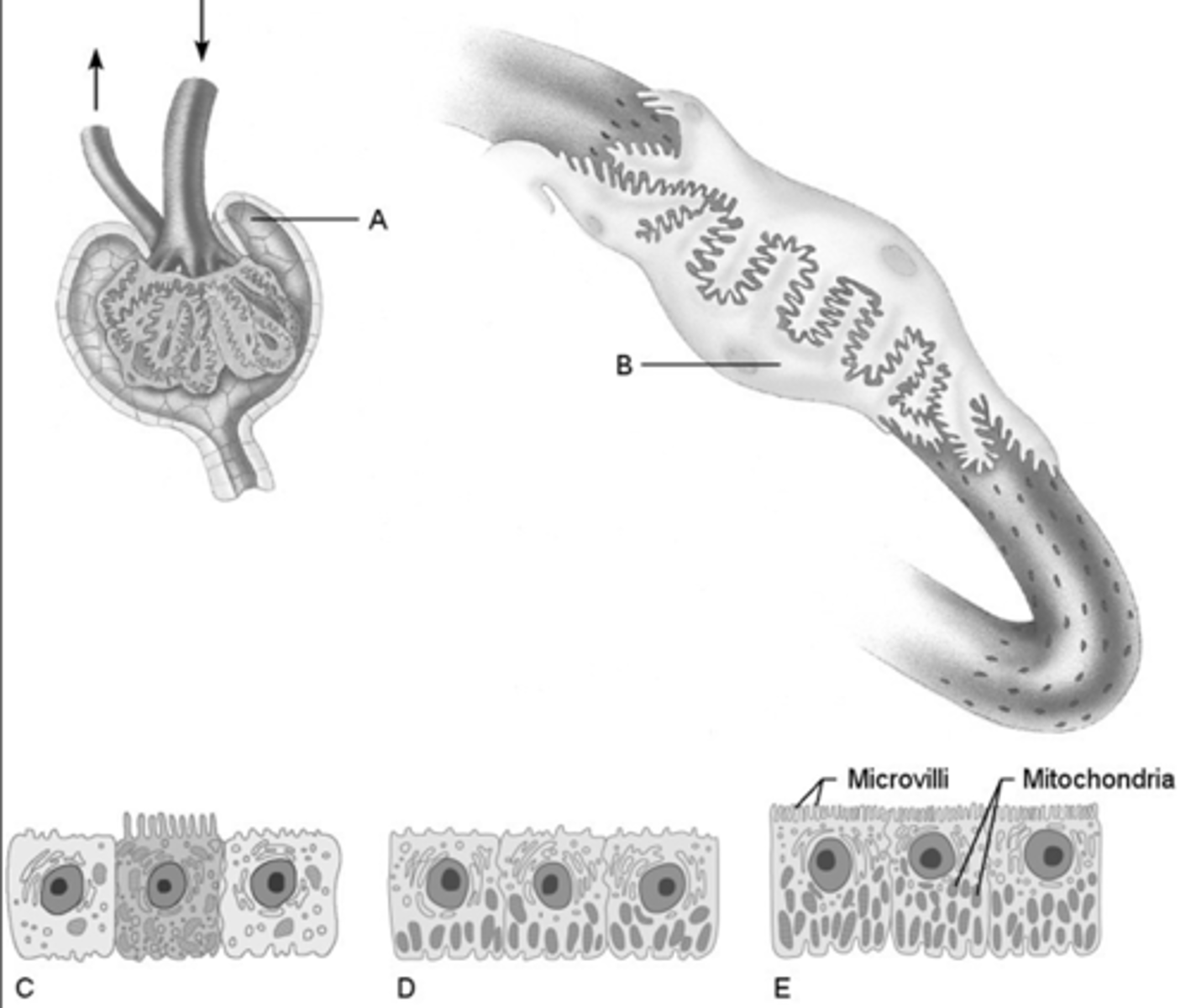
Proximal convoluted tubule cells
E

E
In which structure is filtrate at the site of these cells is about the same osmolarity as blood plasma
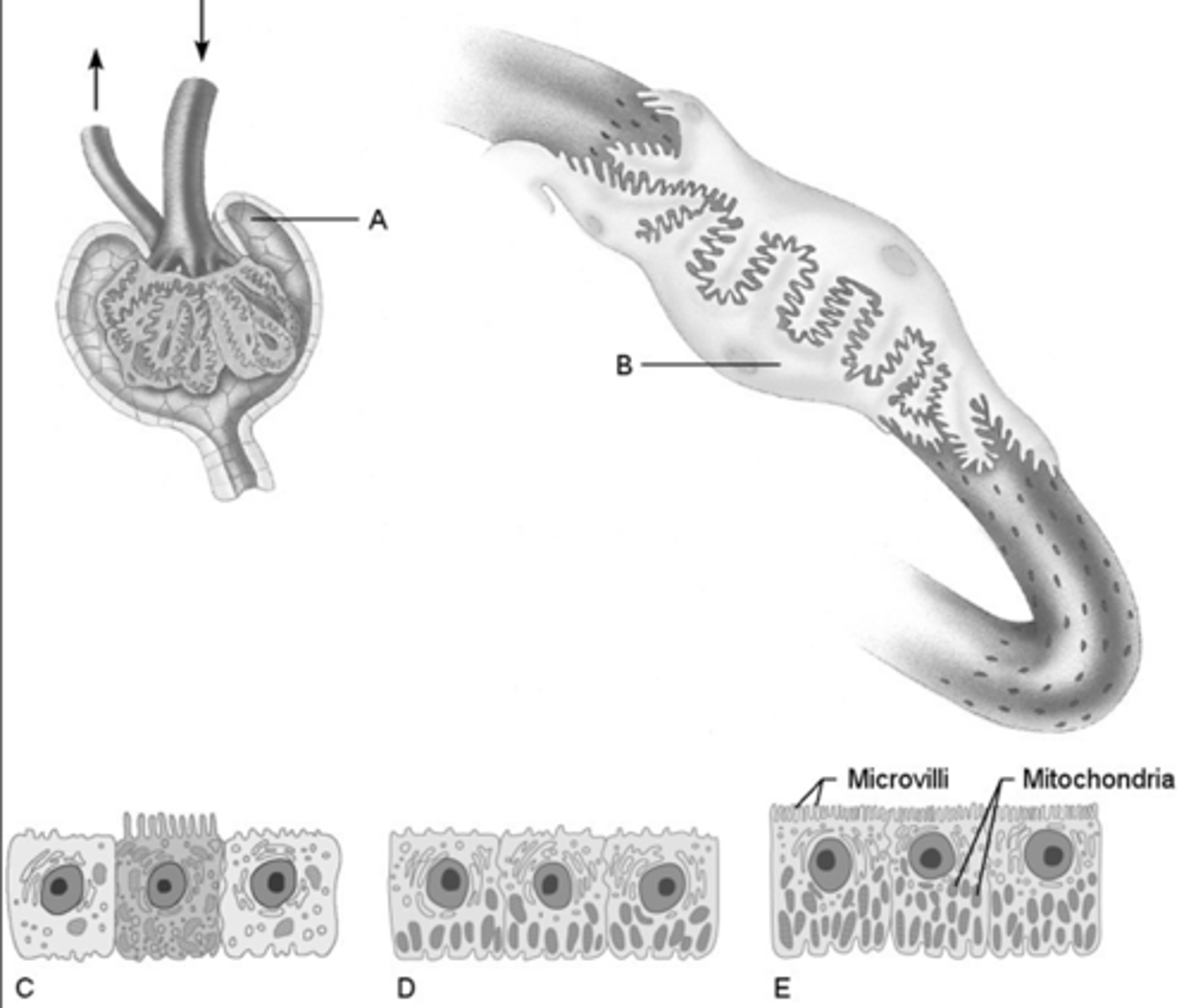
E
Which structure’s cells reabsorb virtually all the nutrients?
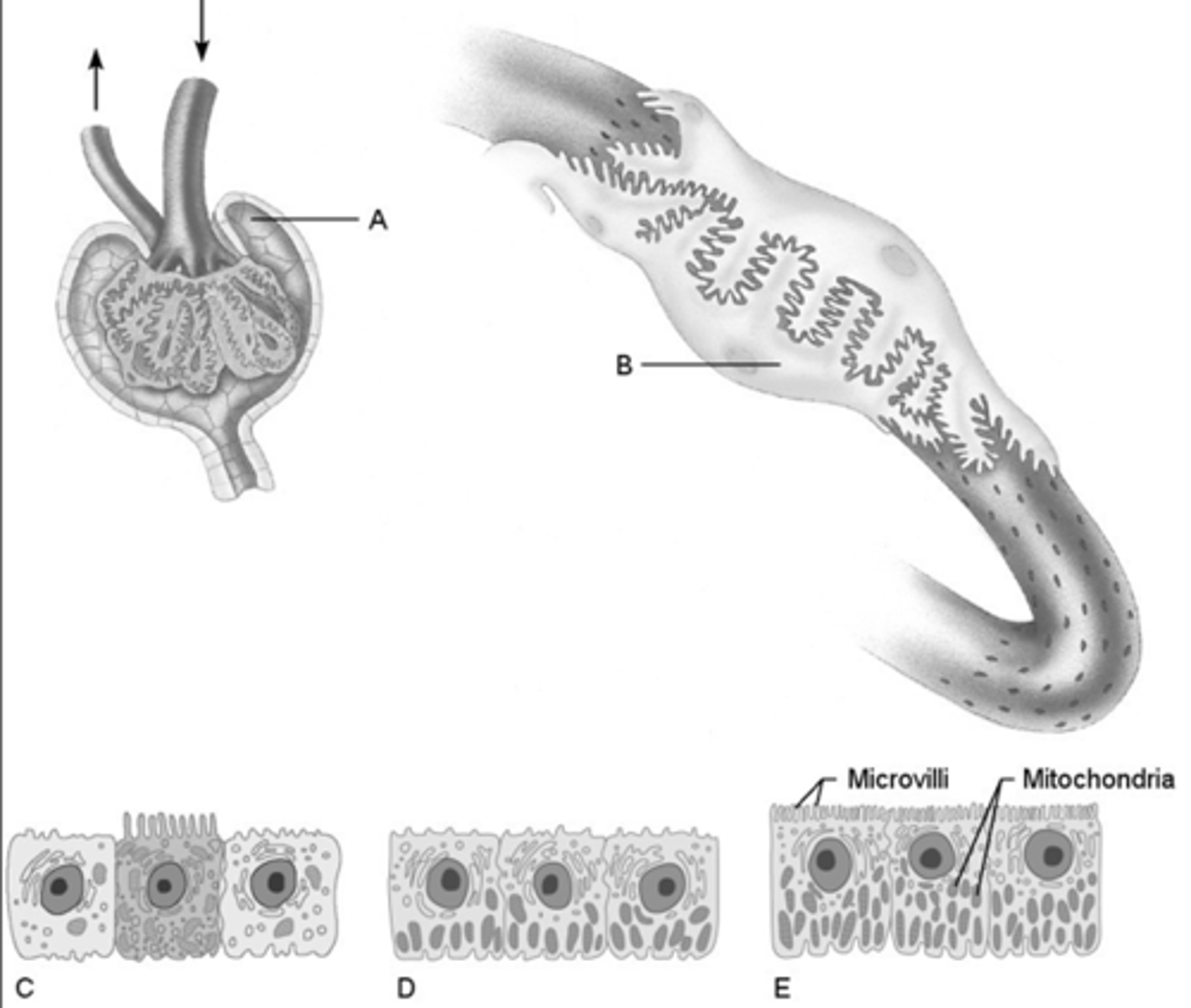
C
Which structure’s cells are most affected by ADH?
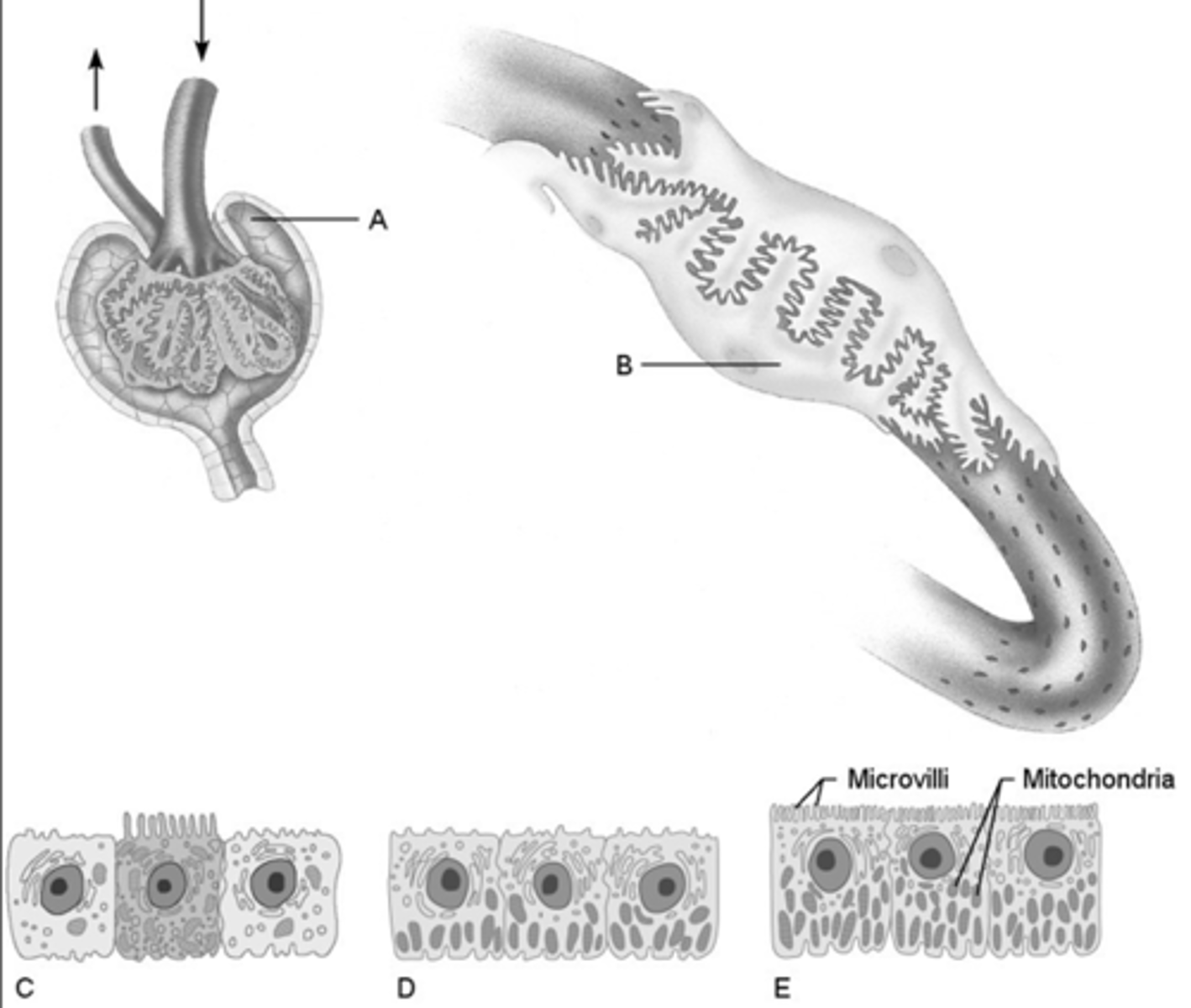
D
Almost no water is absorbed in the cells of this structure

A
Match the following-
Proximal convoluted tubule.
A) Site at which most of the tubular reabsorption occurs.
B) Blood supply that directly receives substances from the tubular cells.
C) Site of filtrate formation.
D) Site that drains the distal convoluted tubule.
C
Match the following-
Glomerulus
A) Site at which most of the tubular reabsorption occurs.
B) Blood supply that directly receives substances from the tubular cells.
C) Site of filtrate formation.
D) Site that drains the distal convoluted tubule.
B
Match the following-
Peritubular capillaries
A) Site at which most of the tubular reabsorption occurs.
B) Blood supply that directly receives substances from the tubular cells.
C) Site of filtrate formation.
D) Site that drains the distal convoluted tubule.
D
20) Match the following-
Collecting duct
A) Site at which most of the tubular reabsorption occurs.
B) Blood supply that directly receives substances from the tubular cells.
C) Site of filtrate formation.
D) Site that drains the distal convoluted tubule.
FALSE
1) True/False-
If the GFR is too low, needed substances may pass so quickly through the renal tubules that
they are not absorbed and instead are lost in the urine.
TRUE
2) True/False-
In the kidneys, the countercurrent mechanism involves the interaction between the flow of filtrate through the loop of Henle of the juxtamedullary nephrons (the countercurrent multiplier) and the flow of blood through the limbs of adjacent blood vessels (the countercurrent exchanger). This relationship establishes and maintains an osmotic gradient extending from the cortex through the depths of the medulla that allows the kidneys to vary urine concentration dramatically
TRUE
3) True/False-
The ureter transports urine from the kidney to the urinary bladder
TRUE
4) True/False-
Water reabsorption through the proximal convoluted tubule is termed obligatory water reabsorption, whereas water reabsorption through the distal convoluted tubule is termed facultative water reabsorption
TRUE
5) True/False-
The position of the kidneys behind the peritoneal lining of the abdominal cavity is described by the term retroperitoneal.
TRUE
6) True/False-
The entire responsibility for urine formation lies with the nephron.
TRUE
7) True/False-
Urine is 95% water by volume.
TRUE
8) True/False-
The act of emptying the bladder is called voiding/micturition
FALSE
9) True/False-
Glomerular filtration is an ATP-driven process
TRUE
10) True/False-
In the absence of hormones, the distal tubule and collecting ducts are relatively impermeable
to water.
FALSE
11) True/False-
The collecting duct is impermeable to water in the presence of ADH.
TRUE
12) True/False-
The urethra contains an internal sphincter of smooth muscle.
FALSE
13) True/False-
Angiotensin II is a substance made by the body to lower blood pressure during stress.
TRUE
14) True/False-
Aldosterone is a hormone that causes the renal tubules to reclaim sodium ions from the filtrate.
FALSE
15) True/False-
Blood pressure in the renal glomerulus is lower than in most parts of the body in order to conserve body water.
FALSE
16) True/False-
The proximal convoluted tubule is the portion of the nephron that attaches to the collecting duct.
FALSE
17) True/False-
Urea is reabsorbed in the loop of Henle
TRUE
18) True/False-
Incontinence is the inability to control voluntary micturition
FALSE
19) True/False-
The myogenic mechanism reflects the tendency of vascular smooth muscle to stretch.
FALSE
20) True/False-
An excessive urine output is called anuria.
TRUE
21) True/False-
Tubular secretion is effective in controlling blood pH.
FALSE
22) True/False-
The trigone is so named because of the shape of the urinary bladder.
TRUE
23) True/False-
Atrial naturetic peptide inhibits sodium reabsorption.
FALSE
24) True/False-
The macula densa cells are chemoreceptors that respond to changes in the urea content of the
filtrate.
TRUE
25) True/False-
Blood in the urine may be a symptom of bladder cancer.
TRUE
26) True/False-
Obligatory water reabsorption involves the movement of water along an osmotic gradient.
vasa recta
1) Fill in the blank-
The capillary bed that surrounds the descending and ascending loop of Henle of juxtamedullary nephrons is called the ________.
renal calculi
2) Fill in the blank-
Urine crystals in the renal pelvis are called ________.
trigone
4) Fill in the blank-
The area between the ureters and urethra is called the ________ in a bladder.
myogenic
5) Fill in the blank-
The ________ mechanism is the general tendency of vascular smooth muscle to contract when stretched.
obligatory
7) Fill in the blank-
Sodium-linked water flow across a membrane is called ________ water reabsorption.